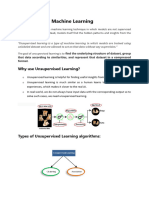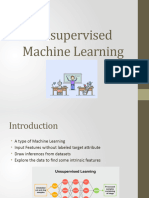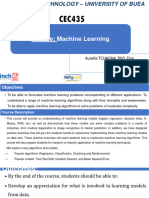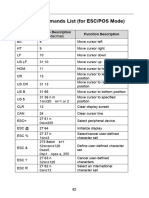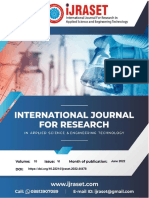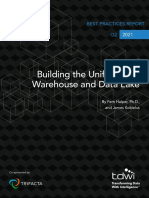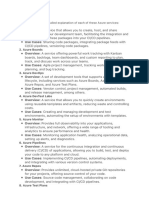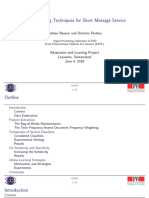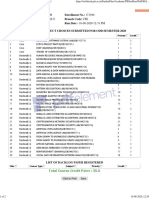0% found this document useful (0 votes)
10 views41 pagesChapter 3 Unsupervised Machine Learning
Chapter 3 discusses unsupervised learning, a machine learning approach that analyzes unlabeled data to uncover patterns and relationships without prior knowledge. It covers types of unsupervised learning such as clustering, association rule learning, and dimensionality reduction, with a focus on clustering algorithms like K-Means. The chapter also addresses evaluation metrics, challenges, and applications of unsupervised learning in various fields.
Uploaded by
mersha abdisaCopyright
© © All Rights Reserved
We take content rights seriously. If you suspect this is your content, claim it here.
Available Formats
Download as PPTX, PDF, TXT or read online on Scribd
0% found this document useful (0 votes)
10 views41 pagesChapter 3 Unsupervised Machine Learning
Chapter 3 discusses unsupervised learning, a machine learning approach that analyzes unlabeled data to uncover patterns and relationships without prior knowledge. It covers types of unsupervised learning such as clustering, association rule learning, and dimensionality reduction, with a focus on clustering algorithms like K-Means. The chapter also addresses evaluation metrics, challenges, and applications of unsupervised learning in various fields.
Uploaded by
mersha abdisaCopyright
© © All Rights Reserved
We take content rights seriously. If you suspect this is your content, claim it here.
Available Formats
Download as PPTX, PDF, TXT or read online on Scribd
/ 41






























